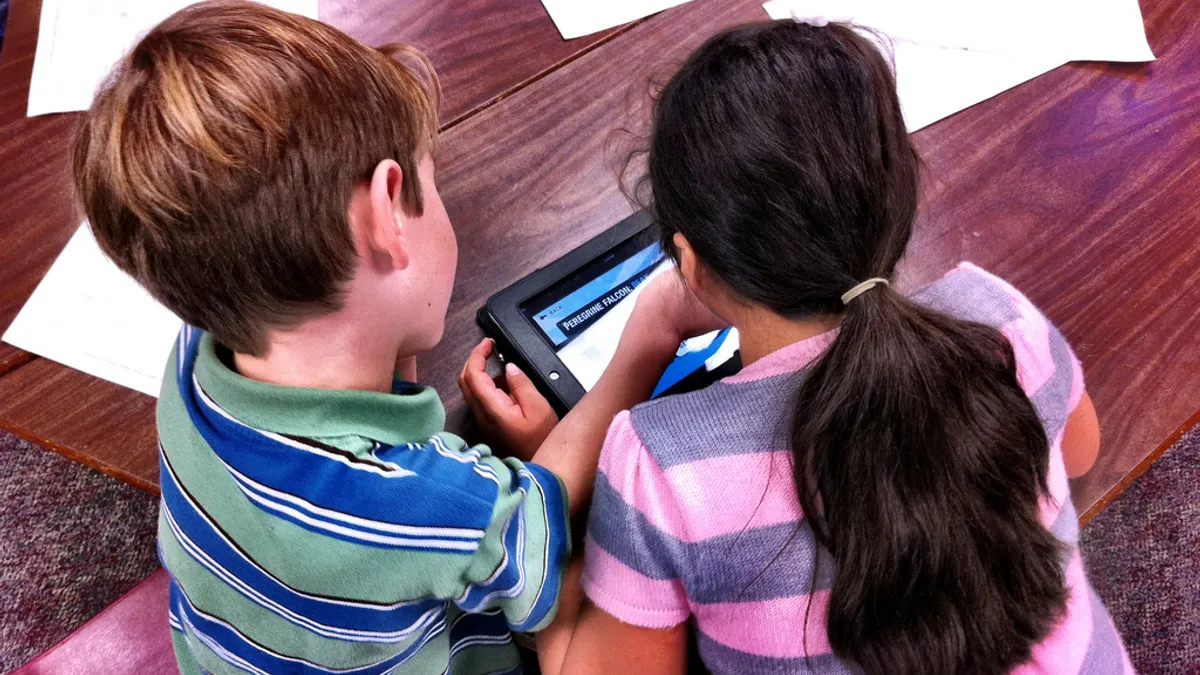Dive Brief:
- Lower-income parents approve of technology use in their children’s classes, with 30% reporting their students use tech every day, according to an eSchool News analysis of a survey by Joan Ganz Cooney Center at Sesame Workshop.
- Most parents believe students spend the right amount of time with tech in the classroom, and 85% of parents think tech could help students better prepare for tests — though some parents worried tech use could damage student-teacher relationships.
- However, 74% of parents did worry the tech could expose their child to inappropriate content, and many believed tech could take away from other important activities. Some also worried that increased time online could subject their child to online bullying.
Dive Insight:
Parents’ interest in tech tools and utilization in the classroom setting is a sign that the fight for digital equity may be solvable with a greater allocation of resources. While computer and tablet usage in classrooms may be increasing, barriers persist at home for many students. About 70% of teachers assign homework that requires the internet to complete, while data from the Pew Research Center indicates five million U.S. families with school-age children may lack broadband access.
As tech possibly becomes more accessible for low-income students, schools should continue to work with families to ensure that parents have a broader understanding of the tools their children are utilizing. With such a support system, students may feel less intimidated by unfamiliar tech, even if the parent and child both do not have all the answers. Some experts have advised that local organizations specializing in tech knowledge could work with interested parents, increasing their knowledge so they can be of assistance to their children. But supporters acknowledge that if students do not have the breadth of time to learn and experiment with tech tools, it could be difficult to close the digital gap despite supportive parents.











